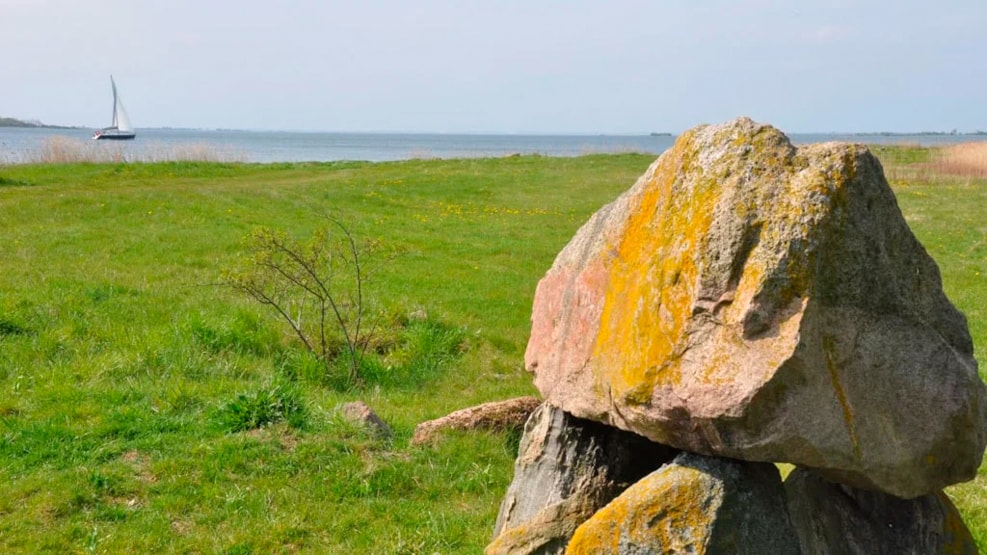
Lehnskov
Between Ballen and Lehnskov Mølleskov, there are a series of cliffs with interesting geological traces dating back several million years.
Sporadic marine deposits and freshwater deposits occur, possibly originating from the end of the first Elster glaciation (490 - 410,000 years ago) and the subsequent Holstein interglacial period.
In the cliff at Mølleskov, a small profile can be seen in layered, marine clay belonging to the approximately 59.5 million-year-old Æbelø Formation. The irregular layering in the Æbelø Clay may reflect some specific climate fluctuations, possibly with astronomical causes such as changes in the solar radiation at that time. The clay is heavily folded and has been incorporated into the Quaternary layers by an ice advance about 18-19,000 years ago. The Quaternary is the term for the time on Earth when there is a cycle of glaciations and interglacial periods, beginning approximately 2.5 million years ago.
Lehnskov Manor
Almost at the water's edge lies Lehnskov Manor, which is privately owned and not open to the public. Formerly, the estate was called Lindskov. The estate was first mentioned in sources from 1412, when it belonged to the noble family Basse, but it has since changed hands many times.
The complex and complicated ownership history of the estate reflects that it was a minor manor and not the owners' main possession. It was divided among several owners for long periods - for example, the Crown owned a share in the estate for a short period. Only in the early 1727, after Johan Lehn had consolidated all shares into his own hands, did the ownership become less complicated.
Lehn's nephew - Poul Abraham Lehn - changed the estate's name to Lehnskov in 1781 and simultaneously incorporated it into the newly established barony Lehn together with the family's ancestral seat, Hvidkilde. Lehnskov served as a breeding farm under Hvidkilde until 1925.